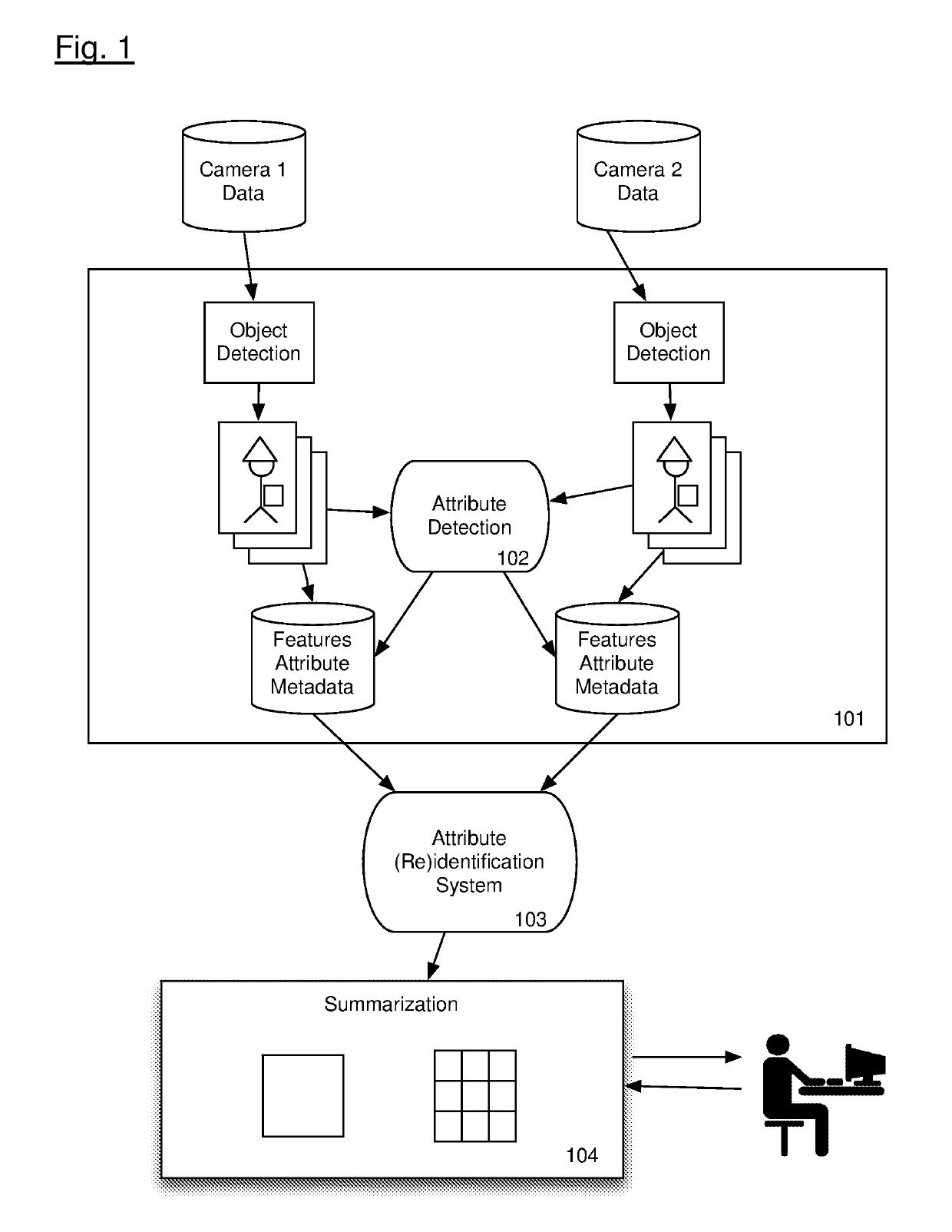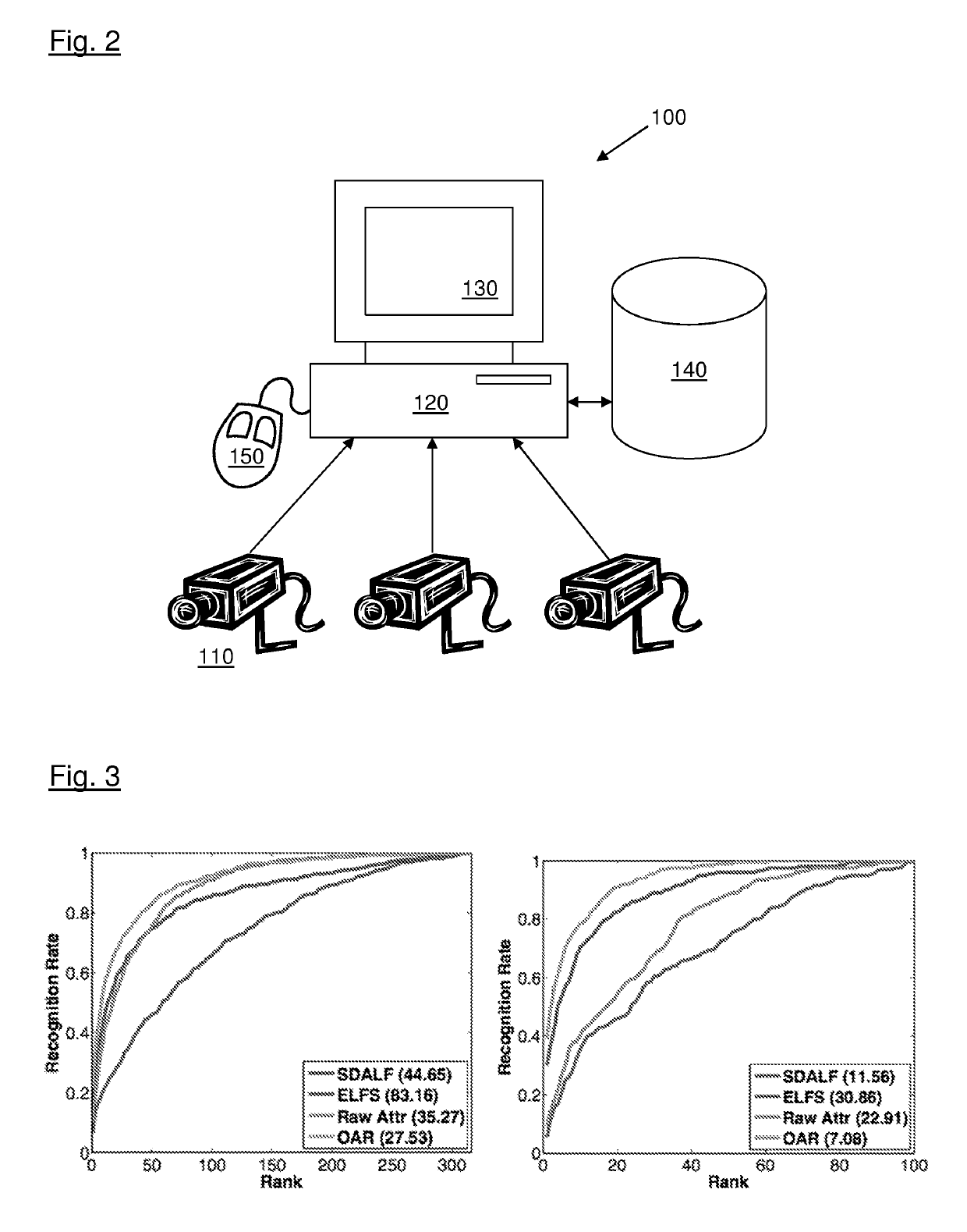Visual data mining
a technology of visual data and mining equipment, applied in the field of visual data mining, can solve the problems of increasing error prone, prohibitively expensive monitoring of the growing volume of surveillance video, and unclear how to summariz
- Summary
- Abstract
- Description
- Claims
- Application Information
AI Technical Summary
Benefits of technology
Problems solved by technology
Method used
Image
Examples
Embodiment Construction
[0095]Early methods consider visual semantic attributes for person search [6] and attributes for multi-camera tracking [7]. However, these do not address a number of crucial technical issues required for any practical engineering system solution. Various embodiments facilitate:
[0096](1) how to generate and validate an attribute ontology that is supported by signals (i.e. measurable from data),
[0097](2) how to correlate attributes with low-level signal features to facilitate tractable re-identification (attributes alone may be insufficient and a combined semantic-attribute with signal features by an appropriate fusion mechanism provides improved results—see Annex A and equation 1),
[0098](3) how to design a mechanism for machine learning and exploiting attribute profiles, and
[0099](4) how to fully exploit attributes, re-identification and their synergy for multi-camera semantic video summarization.
[0100]There has been extensive work on person re-identification [9], but this does not g...
PUM
 Login to View More
Login to View More Abstract
Description
Claims
Application Information
 Login to View More
Login to View More - R&D
- Intellectual Property
- Life Sciences
- Materials
- Tech Scout
- Unparalleled Data Quality
- Higher Quality Content
- 60% Fewer Hallucinations
Browse by: Latest US Patents, China's latest patents, Technical Efficacy Thesaurus, Application Domain, Technology Topic, Popular Technical Reports.
© 2025 PatSnap. All rights reserved.Legal|Privacy policy|Modern Slavery Act Transparency Statement|Sitemap|About US| Contact US: help@patsnap.com



